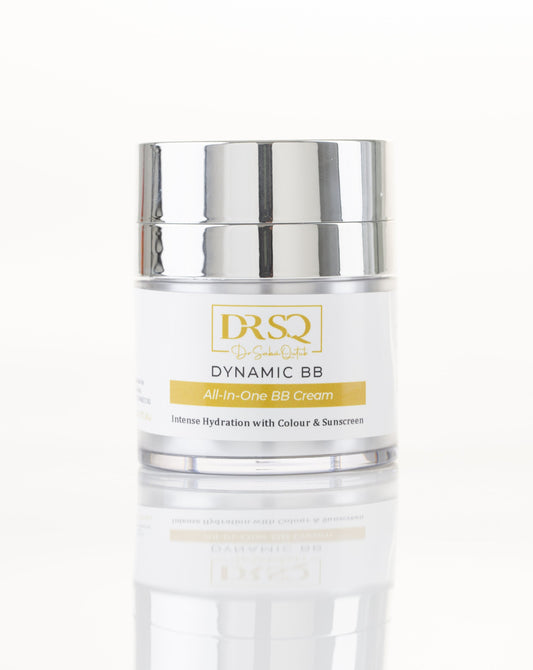Eye Serums: When & How to Apply the Correct Way

Not too long ago, people didn’t give much thought to eye serums. But with time, their importance has grown significantly. Our hectic lifestyle, characterised by excessive screen time, often results in incomplete nights' sleep and is accompanied by tiredness and stress, which has led to eye serums becoming a necessity in your skincare regimen.
Dark circles, under-eye bags, wrinkles and minute fine lines around the eyes, a little amount would be sufficient for optimal results. But you should be practising the right ritual with appropriate ingredients. This blog will go through all the doubts you may have before using an eye serum.
What is Eye Serum
Eye serums are lightweight, non-oily, liquid formulations to address the concerns around the eye area with care. They are packed with specific concentrated active ingredients like peptides, hyaluronic acid, aloe vera, and ceramides. Just like the facial serums, they are made to get absorbed into the skin without making it greasy.
Eye Serum Vs. Eye Cream
Though both products are made to target the eye area concerns, they are not the same. Eye serums are non-greasy and lightweight in texture, which makes them fast-absorbing.
They can penetrate deeply into the layers of your skin to target the root cause of the problem you're facing.
Having said that, eye creams are thicker and richer, used primarily for providing nourishment and hydration.
If you are dealing with dark circles, puffiness, pigmentation, or sagging skin, eye serums can be your go-to product, while creams can be considered for intense moisturisation.
Also Read: How to Get Rid of Dark Circles Under Your Eyes?
Why Eye Serum Matters
The skin near the eyes is sensitive and thinner than the other regions on the face, hence it needs special attention. It can be more prone to showing the signs of ageing due to loss of elasticity and tiredness. Daily activities and lifestyle choices, like a lot of screentime, lack of sleep, and improper nutrition, can have major effects on that area, resulting in dull skin.
Moreover, facial expressions and constant blinking accelerate visible signs of fatigue and ageing. Eye serums are infused with smaller molecules that work their way into the skin.
You must choose the right combination of ingredients or ask your doctor to advise you on the same.
How Should You Apply The Eye Serum
It's not as easy as putting some amount on the skin and letting it go. You require a detailed approach to diminish the signs. Here's what you should do to get the most out of your serum.
Apply to the Clean Skin
Ensure your skin is clean like a slate before you apply an eye serum. You can opt for any mild cleanser according to your skin type and concerns. This makes your skin welcoming for other upcoming products.
Apply a small amount
"Less is more" when you are applying the eye serum. A few drops are enough for both eye areas. Too much product may not suit the thin skin and can trigger sensitivity and itching.
Use your ring finger
It is recommended to put the minimum pressure on the eye area while applying the serum. Start near the inner corners and slowly move towards the outer region.
Allow it to dry
Don't rush into the other product suddenly after applying the serum. Instead, wait for at least a minute to let the product absorb into the skin completely.
When Should You Apply the Eye Serum
In your morning skincare routine, you can begin with a cleanser, then continue with a serum and your daily moisturiser. Use your eye serum as a final step. Repeat the same in your nighttime regimen, that is, use eye serum last. Use one to two times a day for the best effective results.

Morning application of the eye serum helps reduce puffiness and gives your eyes a fresh, awake appearance for the day. Nighttime application helps when the skin undergoes repair and regeneration while you sleep.
Ingredients to Look for in an Eye Serum
The effectiveness of an eye serum depends largely on its active ingredients. You should invest a healthy amount of time in choosing the right ones for your eye serum. You must know what concerns you are dealing with, your skin type, and your goals.
The following are a few ingredients to look for in your eye serum;
Ceramides
They lock in the moisture, delivering deep hydration to relieve and strengthen the skin. Ceramides are also helpful for anti-ageing signs like fine lines and dryness.
Peptides
Our skin loses elasticity over time. Peptides can stimulate collagen production in your skin, which is responsible for plumpness and firmness.
Hyaluronic Acid
Dryness around the eye area can further cause fine lines. All skin types need moisture, and hyaluronic acid can do the job right.
Vitamin C
Vitamin C has the ability to reduce pigmentation and uneven skin tone. It also fights environmental damage and free radicals.
Common Mistakes to Avoid
Even if you have a good eye serum with appropriate ingredients, it will not work effectively if you are making some common mistakes. Let's see what you should avoid while applying an eye serum.
Applying near the lash line
Avoid getting the serum in your eyes, as it can be dangerous. If this happens, wash it off immediately and rush to the doctor if it irritates or hurts in any way. Simply stick to the orbital bone area.
Skipping the application
Applying today and forgetting tomorrow will not get you anywhere. If you really want to achieve your bright eye goal, be consistent in your morning and nighttime routines.
Layering wrongly
You cannot put products incorrectly on your skin and expect positive results. The correct order is cleanser, serum, moisturiser, and eye serum for maximum efficacy and effective results.
Ignoring your skin type
You should not put harsh ingredients on your sensitive skin, or go with actives that your skin does not tolerate. This will cause redness, dryness, or trigger flare-ups.
Patting vs. Rubbing: What’s Best
You should not rub your facial skin, specifically the eye area, as it is even more delicate than the rest of the face. It is susceptible to fine lines, pigmentation, and sagging if not handled well. Rubbing can harm the skin by stretching the delicate under-eye skin. This can lead to even more fine lines and also cause irritation or redness.
While patting works by supporting lymphatic drainage and reducing puffiness. It decreases skin stretching and allows for maximum absorption of the product.
DRSQ’s Eye Serums for Dark Circles and Wrinkles
DRSQ's dermatologist-approved eye serums are infused with effective and soothing skincare ingredients that target your crow's feet, dark circles, under-eye puffiness, and more.
Eye Magic Night Balm

Eye Magic is a supreme combination of spin trap (PBN) with liquid crystals, ceramides, peptides, and hyaluronic acid to firm the eye area, reduce wrinkles, restore volume, and lubricate the roughness. Just one to two pea-sized amounts are enough to use as the last step in your morning and nighttime routine. It is suitable for all skin types, including the sensitive ones.
Eye Restore

Eye Restore is a brightening eye serum with snap-8 to encourage smooth and relaxed skin, Palmitoyl Oligopeptide & Palmitoyl Tetrapeptide-7 to plump up the skin, magnesium, zinc, and copper to restore skin vitality and reduce dark circles. Apply it as the last step in your routine in both morning and nighttime.
Conclusion
Eye serums are no longer an extra in skincare routines but have emerged as a necessity. Whether you are dealing with dark circles or struggling with premature signs of ageing near the eyes, eye serums can offer an ideal solution. Make sure to choose the right product with an ideal combination of ingredients as per your skin type.
References:
-
Daniel P Friedmann, Mitchel P Goldman, "Dark circles: etiology and management options", 2015 Jan
-
Kui Young Park, Hyun Jung Kwon, Choon Shik Youn, Seong Jun Seo, Myeong Nam Kim, "Treatments of Infra-Orbital Dark Circles by Various Etiologies", 2018 Oct
-
Fernanda Magagnin Freitag, Tania Ferreira Cestari, "What causes dark circles under the eyes?" 2007 Sep
- Rashmi Sarkar, Rashmi Ranjan, Shilpa Garg, Vijay K Garg, Sidharth Sonthalia, Shivani Bansal, "Periorbital Hyperpigmentation: A Comprehensive Review", 2016 Jan



